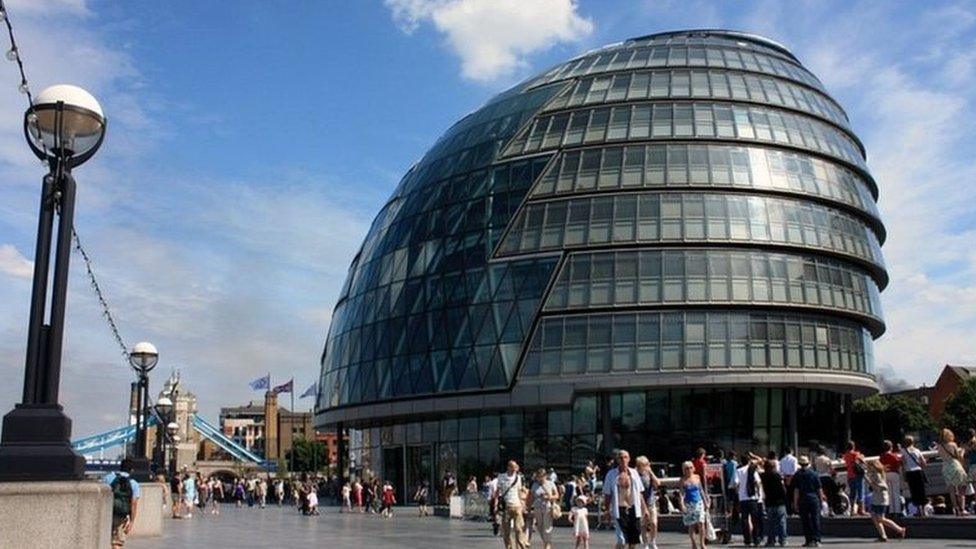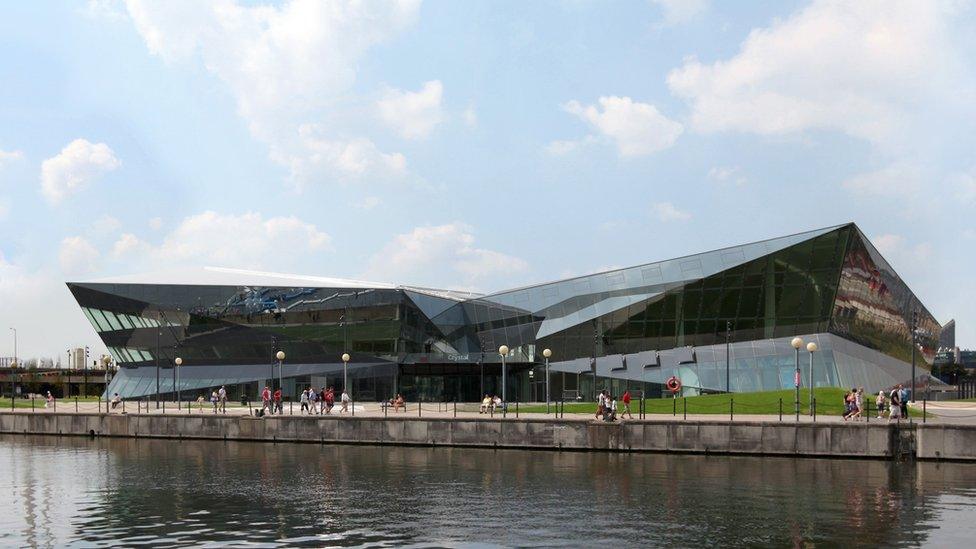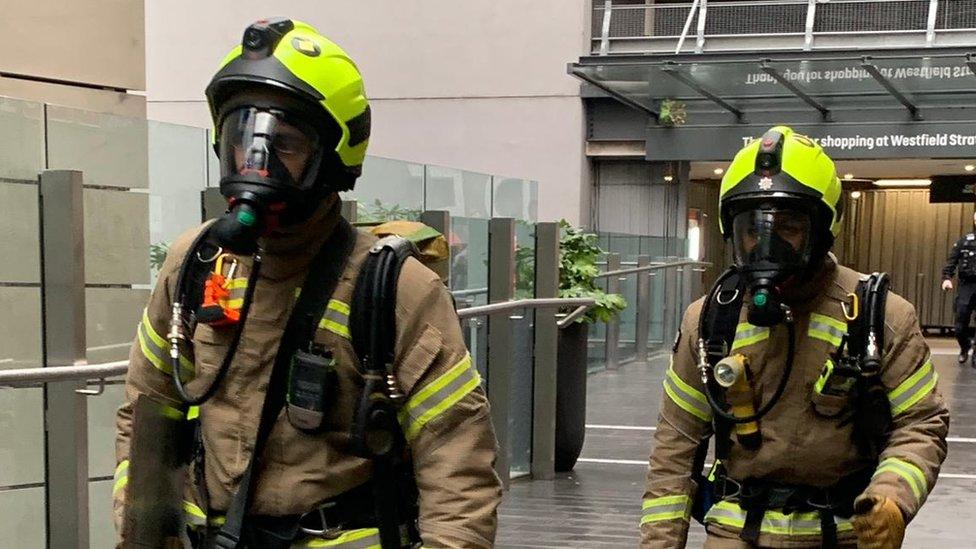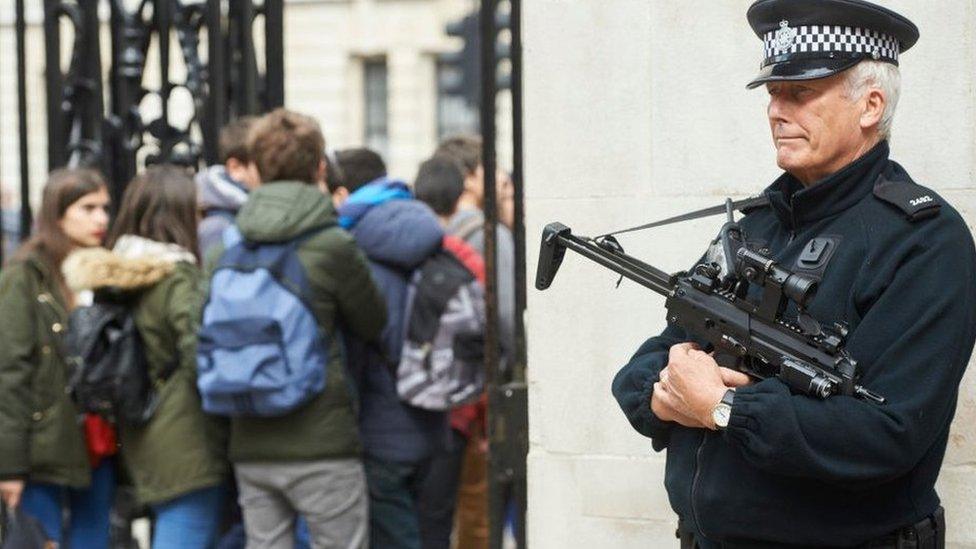City Hall to relocate from central London to the East End
- Published

City Hall was designed by Sir Norman Foster
Sadiq Khan is to move London's government from City Hall to a new headquarters in the east of the city.
The Crystal building in the Royal Docks in Newham will become the home of the mayor and the Greater London Authority (GLA) at the end of next year.
More than 1,000 employees of the GLA group were informed on Tuesday about the decision, which followed a consultation over the summer.
The GLA's Conservative leader Susan Hall said the plan was "flawed".
A spokesman for the Mayor of London said the move would save more than £60m over the next five years.
City Hall, which was designed by Sir Norman Foster, has been the official home of the GLA since it was opened by the Queen in 2002 and occupies a prominent position on the south bank of the Thames.
The GLA has leased the building from a private landlord - the Kuwaiti-owned St Martin's Property Group - at a cost of more than £11m a year.
However the terms of the 25-year-old lease allow for a break in the contract at the end of 2021.
Faced by Mr Khan's threat in the summer to move out of City Hall, the landlords offered an undisclosed reduction in the annual rent, but negotiations failed to produce a deal.
The Crystal was opened in 2012 by electronics giant Siemens which cited it as an exemplar of sustainable design.
It is located near London's cross-river cable car, which was opened by Boris Johnson when he was mayor.
Siemens sold the building to the GLA, external in June 2019.

The Crystal was opened in 2012, having been commissioned by Siemens as an exemplar of sustainable design.
The Crystal is close to a new station on the Crossrail route - though the Elizabeth Line, as it will be known, is not currently due to open until 2022.
The glass building has less capacity than City Hall and some GLA staff will instead be relocated to the London Fire Brigade's headquarters in Union Street, Southwark.
Millions of pounds will have to be spent to upgrade security for the mayor and members of the London Assembly.

The London Fire Brigade will still be asked to look for savings by November
Mr Khan would be expected to divide his time between the Crystal and Union Street, although meetings of the London Assembly would take place in the new headquarters.
Over the summer, the Conservative group on the London Assembly claimed Mr Khan had exaggerated the potential savings from the move.
A subsequent review of the options by the GLA found the savings would actually be greater than first thought.

Front-line police services will be protected from any potential cuts, Sadiq Khan said
The mayor told the London Assembly recently that the move was necessary because of government under-funding.
Moving London's government from its central location to a site in Newham to the east of the capital has been criticised by some as likely to diminish its role and status.
Others - including Labour-run Newham council - maintain it will spur the regeneration of one of the poorest parts of the capital.
The mayor says he faces cuts to the GLA, police, fire service and Transport for London (TFL) of more than £400m over the next year and his priority is to protect jobs.
In response to the confirmation of the move, Conservative leader Ms Hall said she was "disappointed" and described it as a "half-baked plan based on dodgy numbers".
She added: "The mayor was offered a substantial rent reduction by the landlord of the existing building.
"Instead of accepting it, Khan has chosen a flawed plan to move. We will doubtlessly see costs spiral and fewer savings than he promises."

Analysis
Tim Donovan, Political Editor, BBC News, London
Moving HQ from the heart of the city to east London might seem at first glance a dramatic, if not over-dramatic, response to the financially straitened times faced by the mayor.
Yet he argues it needs to be about people, not places. As well as enabling him to protect jobs, it looks ahead to a post-Covid world where fewer organisations and fewer employees will be quite as wedded to their offices and their brass nameplates.
Some will feel it diminishes the status of the mayoralty to up sticks and shuffle downstream to an area of the capital which feels a bit remote - and is, let's face it, a work in progress.
On the other hand, that is precisely the point.
Regenerating the Royal Docks is a post-Olympic mayoral policy priority once backed by one Boris Johnson. So what impact could anchoring the seat of London government there have?
There are swathes of public land (a lot of it owned by the GLA) begging for development. The Crystal nestles beneath an under-used cable car, and the ExCel Centre, City Airport, Newham Council's HQ, the University of East London and a new Crossrail station are nearby.
Things are happening. This could help make things happen even faster. Practically as well as symbolically it could prove an exciting and transformative journey.

Latest news and stories from London

For more London news follow on Facebook, external, on Twitter, external, on Instagram, external and subscribe to our YouTube, external channel.
- Published24 June 2020

- Published12 August 2020

- Published7 October 2020
